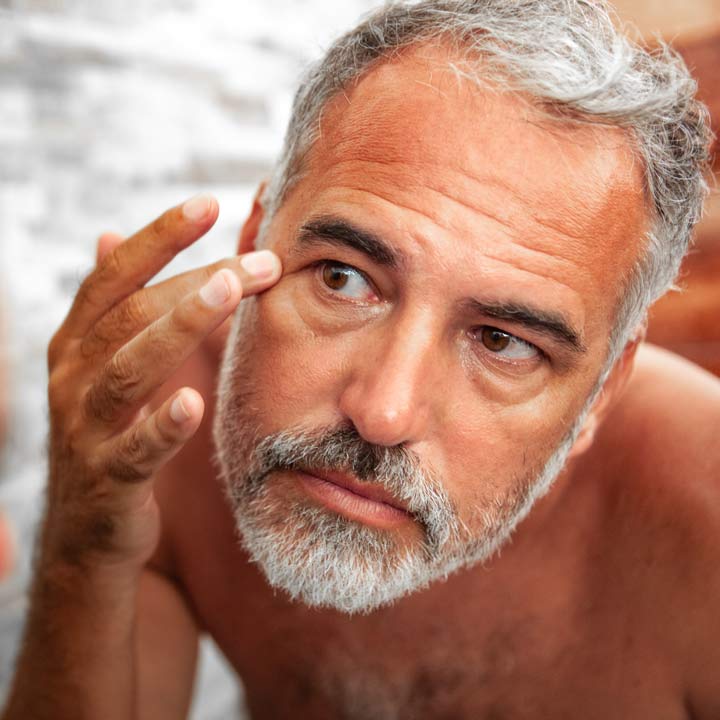What are eye bags?
 As people age, the skin under the eyes can wrinkle and appear puffy, giving the appearance of “bags under the eyes.” These eye bags are usually the result of excess skin or fat, which may need to be removed with surgery. An eyelid surgeon can determine whether skin, fat or both should be removed to achieve the best results.
As people age, the skin under the eyes can wrinkle and appear puffy, giving the appearance of “bags under the eyes.” These eye bags are usually the result of excess skin or fat, which may need to be removed with surgery. An eyelid surgeon can determine whether skin, fat or both should be removed to achieve the best results.
You may also have "puffiness" of your upper eyelids, in which case your surgeon can work with you to determine if you would benefit from a cosmetic upper eyelid blepharoplasty, which can be performed at the same time as the lower eyelid surgery.
Lower blepharoplasty – eye bag surgery
Surgery to reduce the look of eye bags is usually performed under general anesthesia and lasts one to two hours. You are typically able to go home the same day.
During surgery
During surgery, your surgeon will either make an easily concealed cut (incision) on the inside of your eyelid or a small cut just underneath your eyelashes. This area tends to heal very well, and the scar usually isn’t noticeable.
Our surgeons can target the fat, skin or muscle from a cut on the inside of the eyelid due to their immense training and comfort with surgery around the eye. Alternatively, when the cut is performed on the outside of the eyelid, there can be an increased risk of scarring and lid retraction, which is when the lid pulls too far down, making it difficult to completely shut the eye.
Our surgeons are also well trained in ocular fat transposition, a technique used to fix the “sunken” or hollow look some people experience under the eye. Often, injectable fillers can be used to fix this appearance of hollowness, but moving and repositioning nearby ocular fat allows for the best healing and most natural result.
Recovery from surgery
After surgery, your eyelid may feel tight and sore. Your eyes may be watery, dry, sticky, itchy or sensitive to light. Your vision may also be blurry for a few days. Your doctor can give you medications to help with pain and discomfort.
Remember to keep your surgery site clean and avoid rubbing it. Follow your doctor’s instructions carefully on how to clean and care for your eye post-surgery.
Most people feel ready to go out in public and back to work in about 10 to 14 days. This may depend on your job and how comfortable you feel with people knowing you had surgery.
Even after two weeks, you may still have some bruising around your eyes.
For the first few weeks, the affected area will be swollen. Once the swelling is gone, you'll be able to see the results of the surgery — and the reduced appearance of eye bags.
Will health insurance cover lower blepharoplasty?
Eye bag surgery is typically out-of-pocket — not covered by health insurance plans. Eye bags usually don’t interfere with vision, so removing them is viewed as a cosmetic surgical option. Check with your doctor’s office and health insurance provider to understand your cost before any procedure.
Why choose the Ohio State oculofacial team
Our oculofacial team at The Ohio State University Wexner Medical Center has undergone an additional two-year training fellowship specific to eyelid and eye plastic surgery (oculofacial). This allows our team to skillfully use the safest and most effective techniques in eye bag surgery to achieve the best results.
When it comes to eye bag surgery, our surgeons can determine the main cause of your eye bags. We’re well trained to diagnose if your eye bags are caused by excess fat, skin or muscle issues, and knowing how much should be removed to achieve your desired, natural result.

